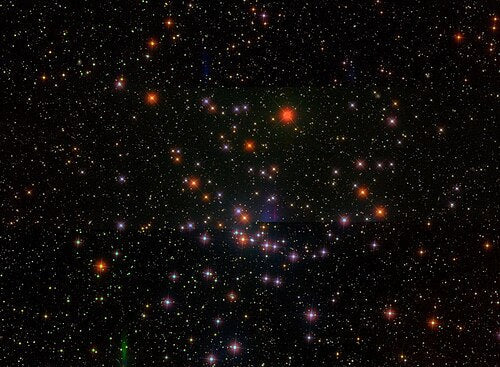
Astronz Object Of The Week: Messier 48
Messier 48 (NGC 2548) is an intermediate-age open cluster situated in the constellation Hydra. It lies approximately 1,500 light-years from Earth and has an estimated age of 300 million years. The cluster contains roughly 80 to 100 confirmed member stars, though deeper imaging reveals many more unresolved background stars. Its angular diameter is approximately 54 arcminutes, corresponding to a physical diameter of about 23 light-years.
M48 was originally discovered by Charles Messier on February 19, 1771. However, due to a one-degree error in declination in Messier’s catalogue, the cluster's identity remained uncertain for over 150 years. It was later correlated with NGC 2548 by T.F. Morris in 1934, confirming that the object Messier recorded was indeed this open cluster in Hydra.
Photometric studies show that the cluster is moderately concentrated, with a slight central condensation. Most of the cluster’s stars fall within the spectral range of A to F, with a small population of evolved stars that have left the main sequence. The turnoff point in the Hertzsprung–Russell diagram is consistent with the cluster’s estimated age, and there are several red giants that serve as useful markers in age determination models.
M48 shows no evidence of current star formation activity, nor is it associated with any residual gas or dust. This is typical for open clusters of its age, which have usually dispersed their natal material. The stellar density is relatively low compared to younger clusters, and tidal interactions with the Galactic disk are likely contributing to its ongoing dispersal. Like most open clusters, M48 is expected to become gravitationally unbound over time due to internal velocity dispersion and external perturbations.
From an observational standpoint, M48 is well-placed for southern observers during late summer and autumn evenings. In the Southern Hemisphere, it reaches optimal viewing conditions in April and May. It can be observed with binoculars as a faint patch of unresolved starlight, while small telescopes (80mm to 150mm aperture) can resolve dozens of individual stars across the cluster’s extent. Larger apertures allow for more detailed study, but due to its relatively loose structure and lack of central condensation, M48 is best viewed at low to medium magnifications to capture its full angular size.
Astrophysically, M48 offers a useful sample for studying stellar evolution in clusters transitioning out of the main-sequence-dominated phase. Its relatively clean environment, intermediate age, and clear stellar population make it a good case for calibrating cluster age estimation methods and investigating the early dynamical evolution of open clusters within the Galactic disk.
